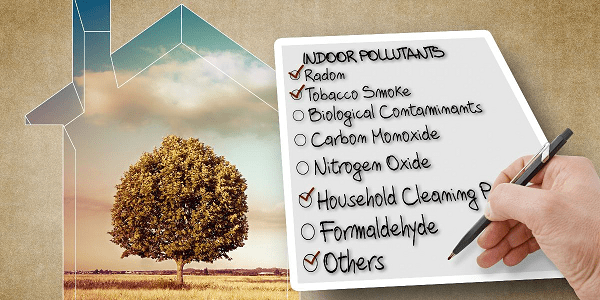
7.23.20 – CEPro
Many companies are hard at work creating safe and effective IAQ products, but how should integrators approach the category? Panasonic offers some advice
It’s safe to say that right now, most Americans prefer to stay indoors. Even before the coronavirus pandemic, studies showed that Americans spend an average of 90% of their time indoors. A recent study by the National Exposure Research Laboratory (part of the EPA) identified that American citizens spent 68.7% of their time in a residence and only 7.6% outdoors. Keeping shelter in place orders in mind, data suggests that we spend 92.4% of our time indoors. This additional time spent indoors means that we have raised our activity-based indoor air pollution generation by a whopping 35%!
The interest level in indoor air quality is really taking off and the industry is noticing. Many builders are actively pursuing solutions that help them market their healthy homes.
Suzanne Shelton from the Shelton Group recently presented an excellent webinar to EEBA members along with attendees. She reminded us that Indoor Air Quality was top of mind before the coronavirus, but the pandemic has taken it to the next level. The webinar is available for all to view and I highly recommend that you listen to the words of wisdom provided by a fast-talking Southern professional.
To better understand the value of IAQ systems, CE Pro reached out to Panasonic to shed some light on some confusing questions, like whether IAQ systems can trap coronavirus:
5 Questions to ask about Indoor Air Quality Systems
#1: What is the most effective way to sell IAQ systems to homeowners?
Focusing on health and family, while educating consumers on the integral role IAQ plays on the home:
- Indoor air quality (IAQ) is the #1 concern in healthy home building
- Today’s tightly built homes trap all sorts of toxins inside, creating an urgent need for better ventilation
- Poor indoor air quality is ranked as the fourth biggest environmental threat in the US
- People spend about 90% of their time indoors, where harmful pollutants can be 2-5x higher, according to the EPA
- Health experts estimate that 35 million Americans suffer from upper respiratory tract symptoms that are allergic reactions to airborne allergens
- Women who work at home have a 54% higher death rate from cancer than women who work outside the home
- Long term effects from repeated exposure to bad indoor air quality include respiratory problems, heart disease and even cancer
#2: Are IAQ systems third-party controllable via an open API by a smart home automation control system?
It largely depends on the manufacturer. Panasonic’s Cosmos healthy system connects with Alexa and can integrate with other third party smart items. At a later development phase, the company plan to have an open API so that other platforms can communicate and control Cosmos.
#3: Do typical IAQ systems have the capability of capturing coronavirus particulates or does that require an expensive, medical-grade system?
Right now we are not sure if IAQ systems have the capability to capture COVID, however if you look at the data:
- Increased ventilation rates can reduce virus (like influenza/SARS) & bacteria counts in the air
- Numerous studies show that air exchange solutions have been shown to decrease infection rates of airborne diseases.
#4: Where can integrators buy Panasonic IAQ systems? What are Panasonic’s offerings?
Panasonic’s IAQ products will be available through Aisleshop.com (August 2020). Prices will vary based on the size of the system and the home.Related: Coronavirus Creates Huge Indoor Air Quality Opportunity
Cosmos Healthy Home System connects wirelessly with Panasonic’s high-powered ventilation products, including WhisperGreen Select, WhisperFresh Select, Recessed Inlet and WhisperHood.
Cosmos intelligently monitors indoor air quality 24/7 and manages four harmful indoor toxins: volatile organic compounds, fine particulate matter, carbon dioxide and humidity. When contaminated air is detected, sensors automatically activate the system to return air to healthy levels.
Customizable presets let integrators create personalized settings based on events, such as additional fresh air and increased ventilation for a customer’s dinner party next weekend.
#5: How easy are IAQ systems to install? (How long does it take, do you need an HVAC technician, etc.)
For most integrators, Panasonic’s installation components enable quick and efficient installations. Integrated duct adapters, adjustable mounting brackets (up to 24-inch o.c.), fan/motor units that easily detach from the housing and uncomplicated wiring all lend to user-friendly installation. However, HVAC technicians are recommended for proper installation.
